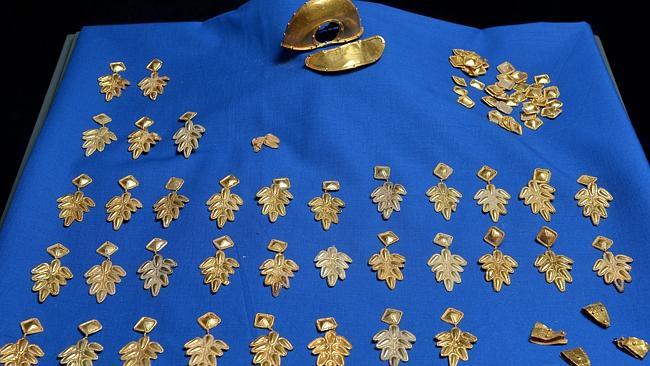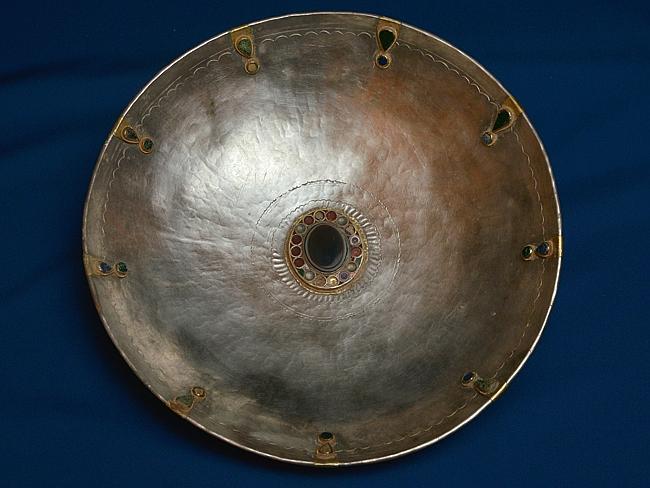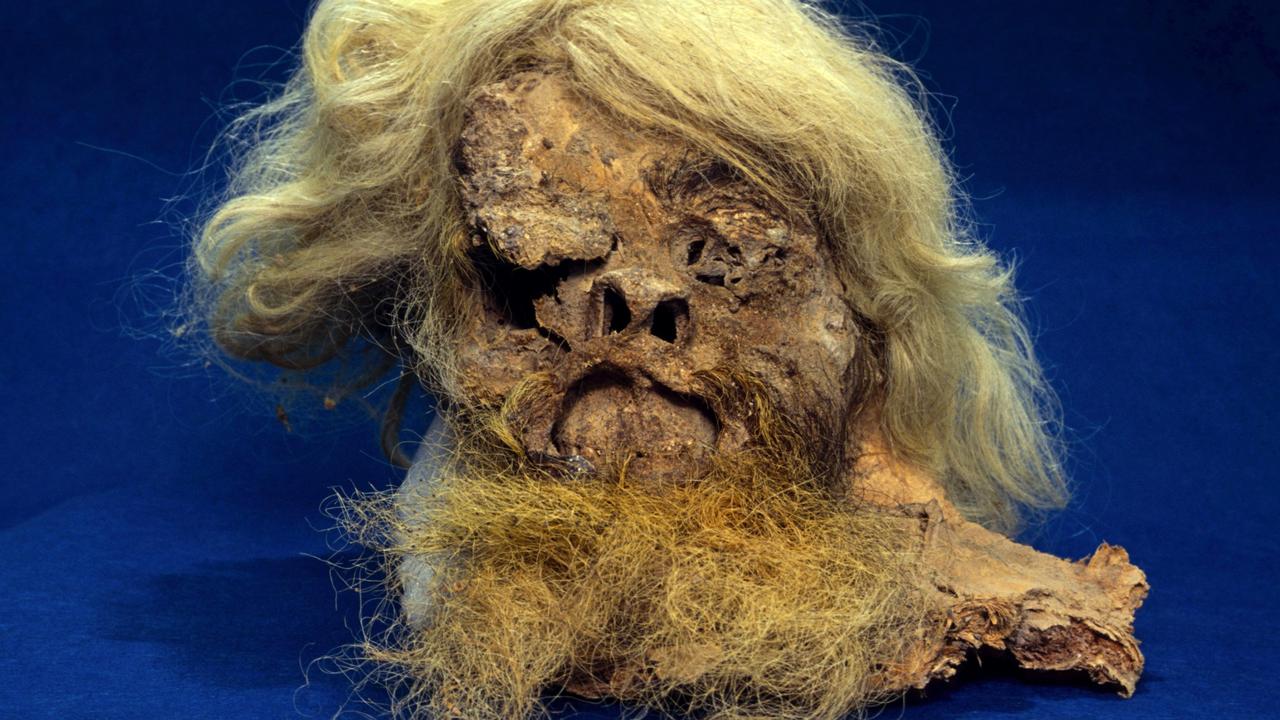A series of finds in the past month has uncovered lost Roman artefacts and a hoard of medieval silver coins
A $10 MILLION gold coin stash in California isn’t the only recent treasure find. A Roman gold hoard and a cache of medieval coins have also been unearthed.

Archaeology
Don't miss out on the headlines from Archaeology. Followed categories will be added to My News.
A $10 MILLION gold coin stash in California isn’t the only treasure trove uncovered in recent weeks.
A Roman gold hoard in Germany and a cache of medieval silver coins in Scotland have also been unearthed.
An amateur treasure hunter was illegally prospecting in a German forest with a metal detector when he found objects which many have linked to the legendary Nibelung hoard, that features in Norse and German sagas and Richard Wagner’s opera cycle.
RELATED: Buried treasure — it still happens. Californian couple find $10 million in gold coins
In what may be Germany’s largest ever gold-and-silver relic discovery, the illegal dig in a wooded area in the Rhineland-Palatinate region attracted attention from police when the objects were quietly offered for sale.
The prospector, after visits from inspectors earlier this month, eventually handed the artefacts over.

The objects, including a set of leaf-shaped gold adornments, badges and ornaments, are thought to have come from a high official’s personal possessions. They have been dated to the period surrounding the fall of the Roman Empire 1500 years ago.
Also among the hoard was a silver bowl adorned with precious stones and gold inlay, and a set of silver-plated statuettes which may have been part of a military commander’s portable chair. But the highlight is a collection of golden adornments broaches and clasps that may have come from a Roman official’s cloak of high office.

“The (original) owner lived well,” chief archaeologist Axel von Berg told a press gathering.
He said the objects date to a time when Germanic Teuton tribes were plundering towns and villages in the wake of the Roman collapse. The treasure was either buried by a fleeing Roman ruler, he said, or hidden by a “barbarian” who never returned to his stash.

“In terms of timing and geography, the find fits in with the epoch of the Nibelung legend,” von Berg said.
“But we cannot say whether it actually belongs to the Nibelung treasure.”
Charges against the prospector have not been detailed, but von Berg said he caused “immeasurable” damage to the priceless historic artefacts which have a black market value of $1.5 million.
The silver folding chair was “brutally torn out of the earth and destroyed,” he said, adding that a hunt was on for further objects from the illegal dig.

The Scottish treasure find, while amateur, was immediately reported to authorities.
The find of one of the biggest ever hoards of silver coins was made by two men using metal detectors after a five-hour search in a field at Twynholm, near Kirkcudbright in Dumbries and Galloway.
The 322 coins, which are in good condition with the images of several medieval monarchs discernible, have been handed over to Scotland’s Treasure Trove Unit.
One of the prospectors, Derek McLennan, told media: “We had done quite a lot of research and had targeted that particular area. We had been searching for probably about five hours in atrocious weather with rain and 60mph (95km/h) gales. We were both feeling rather scunnered in the last field before we headed for the car.”
Then they found two coins fused together.
“Although it’s a hobby we are serious about it so we immediately recognised that it was medieval hammered coins. It was actually two stuck together, which is highly unusual, so that led us to believe there was a possible hoard of coins in the area and we just started searching.”
That night they found 40 coins. Subsequent visits brought the total to 322.
In another discovery in the region last year, a Roman coin hoard was found at the site of the Belladrum music festival in the Highlands. The 36 denarii coins were discovered when a metal detector was being used during a clean up of discarded tent pegs after the 2012 Belladrum festival.
The find has been valued at about $80,000. While the finders have no legal right to the coins, discoverers are usually granted payments under treasure trove laws.


